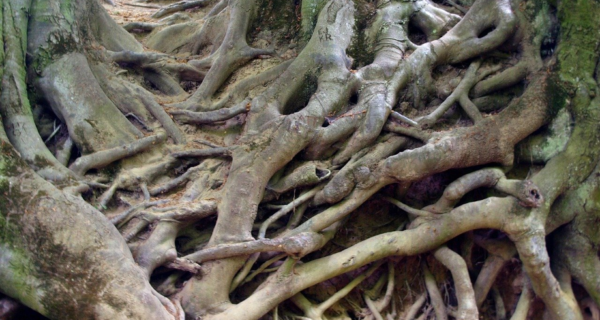Air gach por a bha ’n an suain,
Bho na thainig fuachd gun bhaigh
Friamhaichidh gach por ’s an uir
Every seed that lay in sleep
Since the coming of cold without mercy
Every seed will take root in the earth
~ “An Coisrigeadh Sioil,” from the Carmina Gadelica
Botanical names: Betula pendula, local American species Betula papyifera
Family: Betula
Ogham: Beith
Scots Gaelic: Bher
Irish Gaelic: Beith
Welsh: Bedwyn
Message: Make a beginning.
To begin a thing is to change. Change frightens humanity; as a rule, we’ve always preferred the world to stay predictable, routine, and safely ordered.
A seed is safe and predictable. It is ordered. But it is not alive until it breaks its shell. It is not alive until it begins to try something new.
It is said in the Book of Ballymote that Ogham itself began when Ogma, the one it is named for, cut into a birch twig and made a mark to be a message. The story is told in a series of questions and answers:
Whence the Ogham got its name according to sound and matter?
Who are the father and the mother of the Ogham?
By whom it was written?
Ogham is for Ogma in respect to its sound. According to matter, ogum is og-uaini, perfect alliteration, which the poets applied to poetry. The father of Ogham is Ogma, the mother of Ogham is his blade. (1)
That first mark made by Ogma’s blade, we’re told, was the fid of Beith, ‘the beginning’. The birch tree bears this mark well; the hints of bright viridian in its canopy are the first sign of spring, welcomed by eyes hungry for color after the dark. In the claw of the robin, so Welsh legend tells us, a birch branch is used to kill the soul of winter in its shape of a wren, and free the world from the cold. (2)
In ecological terms, the birch is known as a pioneer tree. (3) In ground that has been decimated by fire or human action, land that would kill an oak, you will see the valor of birch saplings. Slender and fragile, they raise their branches to the sky and whisper to the wind, “We will grow. We will be a forest someday. We are not afraid.”
Beginnings have always frightened humanity. Beginnings and births are perilous, a time of uncertainty as well as joy. Over the years, the birch, slender and white, has come to be the protector of beginnings to the peoples of northern Europe. In Ireland, birch branches were hung over the beds of women in labor, and in Scotland birch timber cradles protected the new and uncertain lives of infants. In Scandinavia, birch beer was drunk as a spring tonic, and in Wales new couples kissed under birch boughs to strengthen their union. (4) At Beltane, all across Europe a birch pole or young birch tree became the maypole, heralding the new summer and blessing the beginning of all things that summer would bring. (5)
It is this cheerful valor that the birch tree offers us. “Come on, give it a try,” it says in the whisper of wind between its bright leaves. “The worst you can do is learn something new in the trying. You’ll be afraid, but don’t let that stop you.”
So many of us let our fears hold us back from trying something new, beginning a venture, taking a plunge. We say, “I’ll wait until I’m good enough,” “I have bills to pay,” “I’m not really ready.” We say, “I’ll try later.” But at the root of all these excuses is the cold little truth. “I’m scared. I think I’ll fail. I don’t want to be a failure.”
Dig out that root as you would dig out a weed, and let the birch tree grow in its place. This is what it will tell you: Sometimes, you are going to make mistakes. Making mistakes is the nature of learning. It is not the nature of failure. The nature of failure is cowardice. You only fail when you stop trying.
Starting something new is terrifying. But do as the birch does: Take a deep breath. Stand quiet and tall. Raise your head up, look forward, and begin.
- Auraicept na n-éces: the scholars’ primer; being the texts of the Ogham tract from the Book of Ballymote and the Yellow book of Lecan, and the text of the Trefhocul from the Book of Leinster Calder, George, 1859-1941; Virgilius Maro, Grammaticus, 7th cent; Isidore, of Seville, Saint, d. 636, Published 1917, public domain
- A Druid’s Herbal of Sacred Tree Medicine, Hopman, Ellen, Destiny Books, 1994
- “Silver birch: Betula pendula”, Forestry Commission, https://www.forestry.gov.uk/fr/infd-8cykgl
- Ogam: Weaving Word Wisdom, Laurie, Erynn Rowan, Megalithica Books, 2007
- Whispers from the Woods: The Lore and Magic of Trees, Kynes, Sandra. Llewellyn Books, 2006

